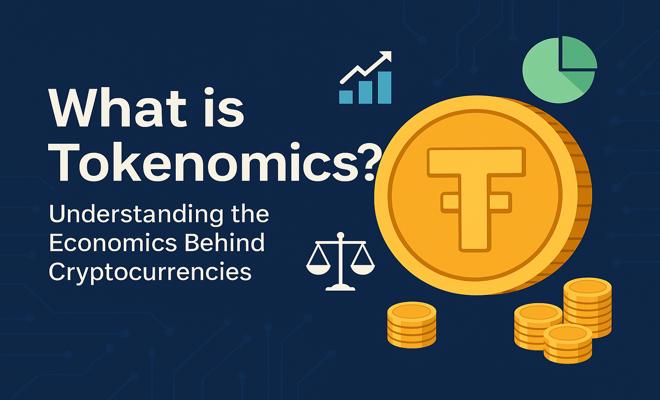
What is Tokenomics? Understanding the Economics Behind Cryptocurrencies 📊💰
💡 Tokenomics is a blend of "token" and "economics," and it's one of the most crucial components of any cryptocurrency project. It defines how a token works, how it’s distributed, what gives it value, and whether it’s sustainable in the long run. In other words, tokenomics is the economic backbone of the crypto world. 🌐
🔍 What Is Tokenomics?
Tokenomics refers to the economic principles and models that govern a cryptocurrency token’s creation, distribution, supply, demand, utility, and incentive structures. It's a comprehensive look at how a token is designed to function within its ecosystem. Without strong tokenomics, even technically solid projects can collapse. 🧱
💡 Why Tokenomics Matters
- 📈 Influences token price stability and growth
- 🎯 Drives user adoption and engagement
- 💼 Attracts long-term investors and partners
- 🛠️ Powers decentralized applications (dApps) and governance
📦 Token Supply Metrics
Understanding token supply is vital for analyzing tokenomics. Key metrics include:
1. Total Supply 🔢
The total number of tokens that will ever be created.
2. Circulating Supply 💰
Tokens currently available in the market and actively traded.
3. Maximum Supply ⛔
The hard cap on the number of tokens that can ever exist (e.g., 21 million for Bitcoin).
4. Inflation or Deflation 🔄
Does the token supply increase over time (inflationary) or is it reduced (deflationary)? Projects with deflationary models often burn tokens to reduce supply. 🔥
🎯 Utility of Tokens
The value of a token often depends on its utility within its ecosystem:
- 🛒 Payment: Used as a currency within a platform
- 🗳️ Governance: Token holders vote on changes or updates
- 💎 Staking: Locking tokens to earn rewards or secure the network
- 🚪 Access: Unlocking premium services or features
- 🏦 Collateral: Used in DeFi for lending and borrowing
🚀 Token Distribution Models
How tokens are initially distributed plays a huge role in price movement and decentralization:
1. ICO (Initial Coin Offering) 💸
Tokens sold to investors in exchange for funding. Common in early projects.
2. IDO (Initial DEX Offering) 🌊
Tokens are launched directly on decentralized exchanges.
3. Airdrops 🎁
Free distribution to users, often to build awareness or reward community members.
4. Mining & Staking Rewards ⛏️
Tokens issued as a reward for providing network support or liquidity.
5. Founders & Team Allocations 👨💻
Reserves for project creators and early contributors, often with vesting periods to avoid sudden dumps.
🧠 Incentive Structures
Projects use incentive mechanisms to encourage user behavior and ensure ecosystem growth:
- 📊 Yield farming and liquidity mining
- 🧾 Governance token rewards
- 📈 Token buyback and burn programs
- 👥 Referral and affiliate rewards
⚖️ Tokenomics in Action: Examples
1. Ethereum (ETH) 🔥
ETH moved from inflationary to deflationary after EIP-1559, burning a portion of gas fees.
2. Solana (SOL) ⚡
Fixed supply inflation model with staking incentives for validators.
3. Binance Coin (BNB) 🧯
Quarterly burn mechanisms reduce supply over time, increasing scarcity.
4. Polkadot (DOT) 🕸️
Inflationary supply but balanced with staking rewards and governance utility.
⚠️ Red Flags in Poor Tokenomics
- 📉 High supply with no demand drivers
- 🤑 Excessive team token allocations with no vesting
- 🚫 Lack of transparency in token use or supply
- 🔄 No clear utility or ecosystem integration
🛠️ Tools for Analyzing Tokenomics
- CoinMarketCap and CoinGecko supply data
- Whitepapers for initial token models
- Blockchain explorers for transparency
- Token unlock calendars to track vesting releases
🔮 Future of Tokenomics
The next generation of tokenomics will likely be more dynamic and AI-assisted. Projects may use on-chain governance and adaptive supply models based on real-time metrics. We also expect more integration with CBDCs and real-world assets (RWAs). 🌍
🧭 Final Thoughts
Tokenomics isn’t just technical jargon — it's the foundation of any crypto project’s success. Understanding the design, distribution, and purpose of tokens allows investors and users to evaluate a project's long-term viability. Before investing in any cryptocurrency, always explore its tokenomics. 📘
Stay informed with BitMedia24 for more guides, insights, and crypto education. 🚀